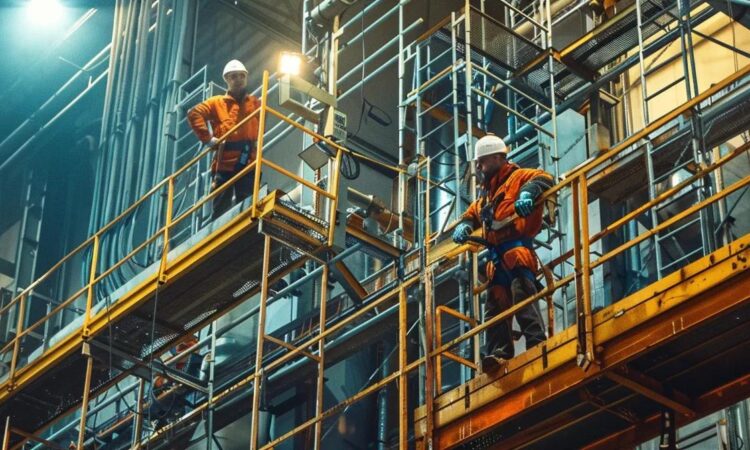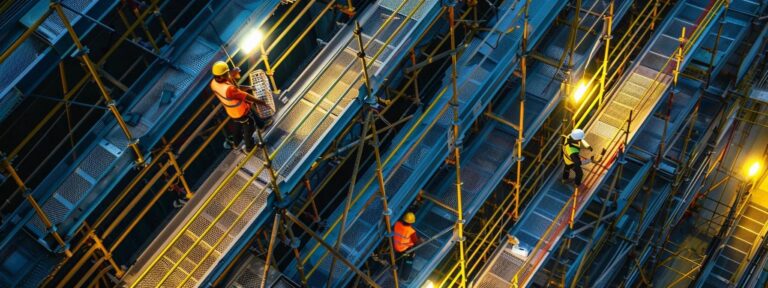Industrial Fall Protection Solutions: Keeping Your Workers Safe at Every Height
Industrial fall protection solutions are integrated systems, equipment, and procedures designed to prevent worker falls and minimize injury risk when working on elevated structures.
Key Takeaways
- Engineered guardrails and lifelines prevent falls across flat roofs, decks, and towers.
- Compliance with ANSI and OSHA standards ensures system reliability and legal adherence.
- Hands-on training and ASSP guidelines reduce accident rates by nearly 45%.
- Data-driven inspections and maintenance extend equipment lifespan and performance.
- Tailored solutions for each industrial application maximize safety and productivity.
What are industrial fall protection solutions?
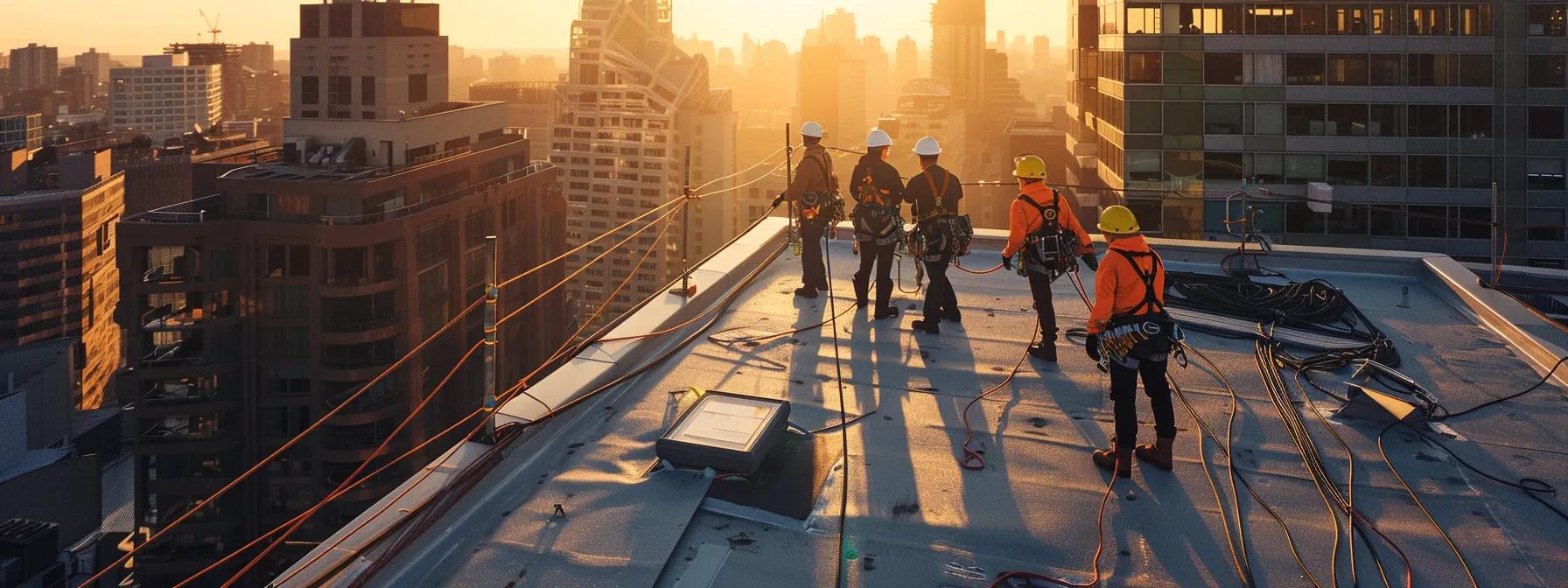
Industrial fall protection solutions are integrated systems, equipment, and procedures designed to prevent worker falls and minimize injury risk when working on elevated structures.
These solutions combine engineered guardrail systems, personal fall arrest harnesses, lifeline systems, and safety nets to cover a range of applications from flat roof maintenance to communications towers inspection. Our design installation team ensures seamless integration of all components. Contact us to get a free quote, visit our about-us page, or learn more about the industries we serve. Check out our blog for the latest updates on fall protection equipment.
By following ANSI (American National Standards Institute) and OSHA (Occupational Safety and Health Administration) guidelines, companies ensure regulatory compliance and protect employees with fall protection equipment in construction, manufacturing, warehouse mezzanines, and telecommunication infrastructure, the industries we serve. Visit our about-us page to learn more about our design installation services or read our latest blog. Get a free quote today!
How do construction fall protection systems work in action?
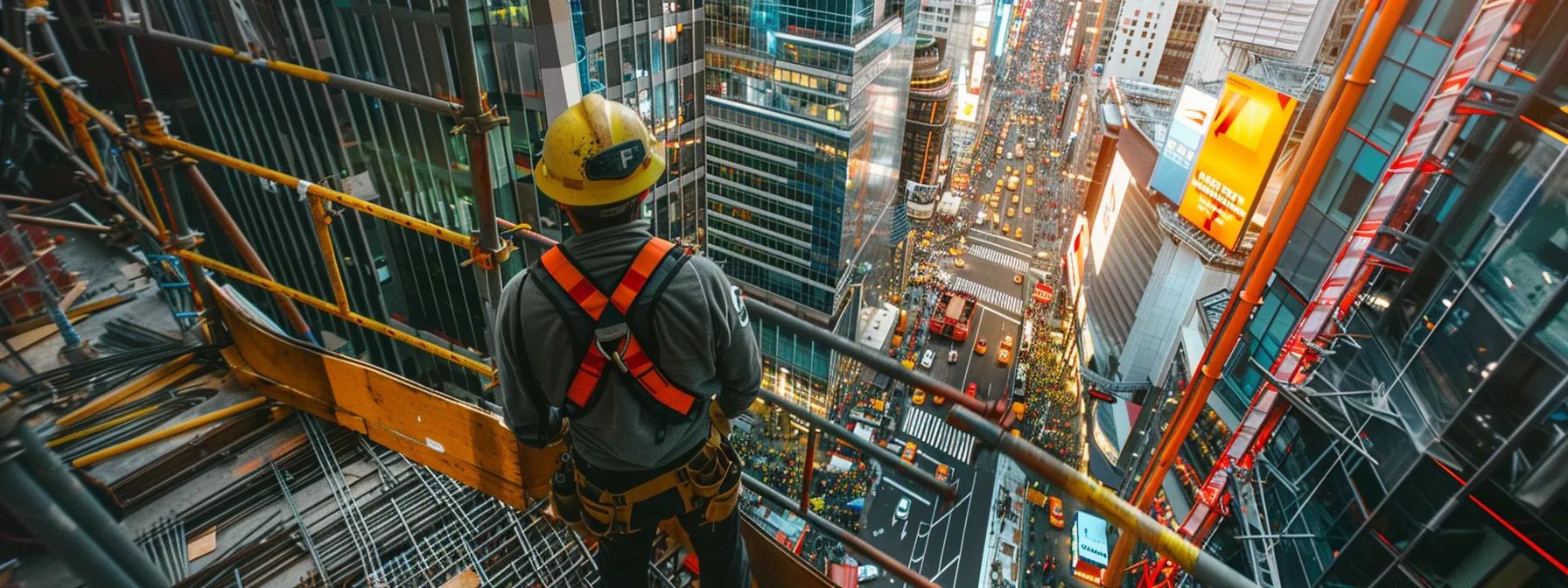
Construction fall protection systems work by creating physical barriers or secure attachment points that arrest a fall before a worker hits a lower level.
Guardrail systems installed along deck edges and stair openings use steel rail and toe-board assemblies to block off risk areas using fall protection equipment, while scaffolding platforms equipped with railings ensure stable working floors on multi-story sites. Our design installation ensures the proper setup and functionality of these safety measures. To learn more about about-us, explore our blog, or get a free quote today.
Personal fall arrest systems, including full-body harnesses, shock-absorbing lanyards, and carabiner-connected lifelines, engage within milliseconds to slow and stop a fall, reducing deceleration forces below 1,800 lbf as required by ANSI Z359 standards. For more information, visit our blog, learn more on our about-us page, or get a free quote on our fall protection equipment.
What safety systems ensure protection on telecommunication towers?
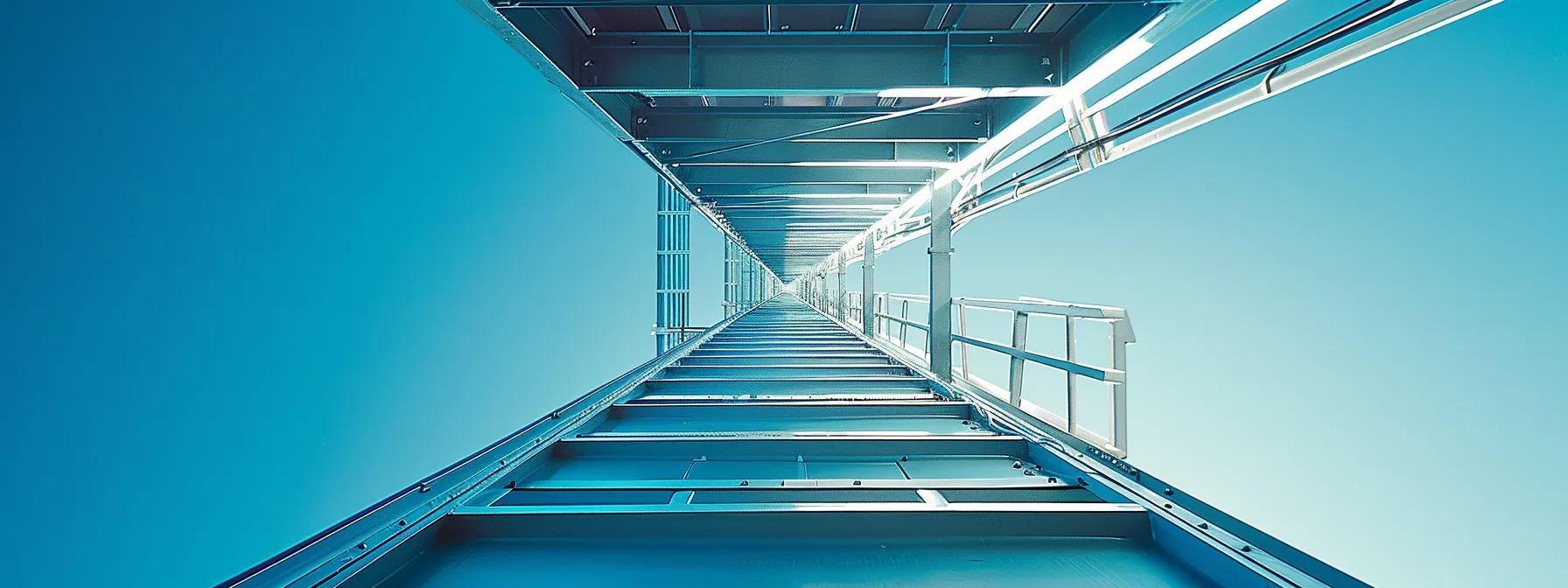
Telecommunication tower safety systems ensure protection by combining ladder-climb fall arrest devices, self-retracting lifelines, and anchorage connectors designed for vertical structures.
Engineered ladder systems with built-in cable-guide rails and fall-block devices allow technicians to ascend antennas without manual cable management, while turn-key anchor points on tower legs secure harness tether attachments at the leading edge. For more information, visit our blog or get a free quote today. Our design installation ensures reliable fall protection equipment for all your needs.
Certification to ANSI and ASSE TIA-222 standards ensures the tower safety gear resists radio-frequency corrosion, extreme wind forces, and vibration from communications equipment across the industries we serve, maintaining worker protection at heights exceeding 300 ft through our fall protection equipment and design installation. Get a free quote today.
How are safety solutions tailored for diverse industrial applications?
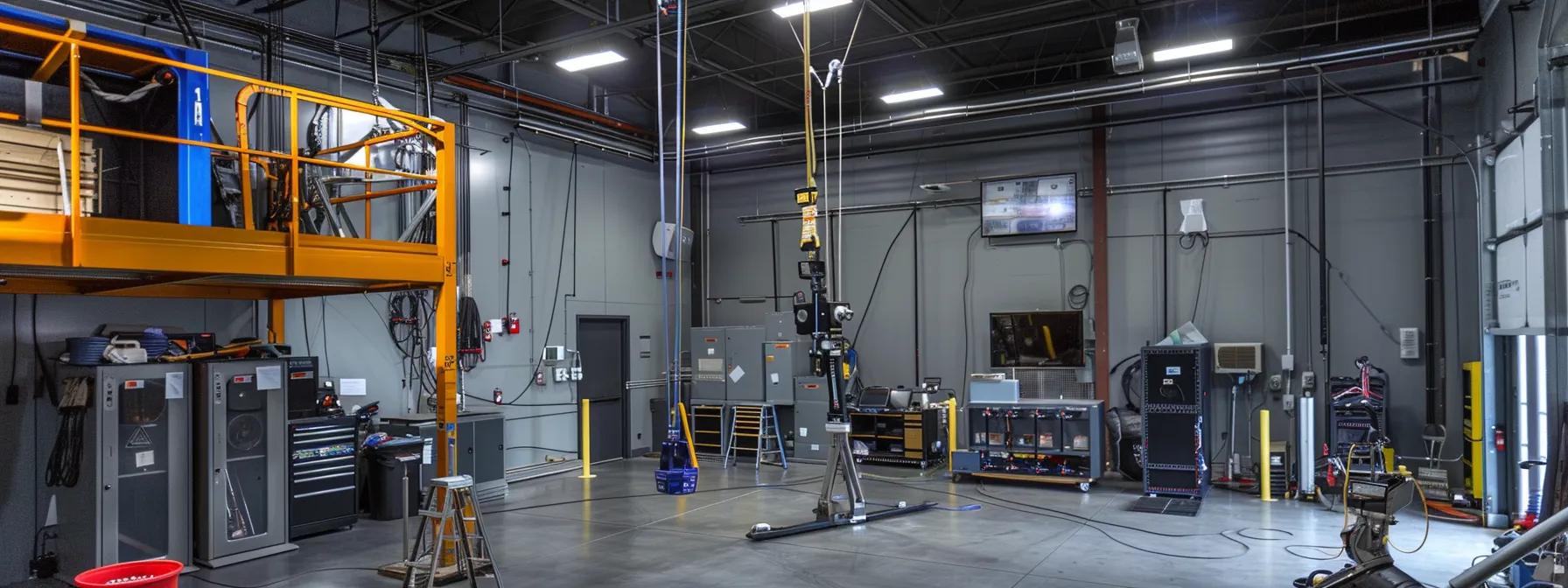
Safety solutions are tailored by assessing each facility’s workflow, structure type, and hazard profile to match equipment and procedures with application needs.
On flat roofs and skylights, parapet guardrails and mobile anchor carts provide fall restraint without drilling into waterproof membranes, whereas in warehouses, lifeline systems integrated into overhead crane rails allow personnel to traverse catwalks and mezzanines. For more information, get a free quote on our fall protection equipment.
For confined space entries such as railcar interiors or elevator shafts, our industries we serve include portable davit-arm systems with monitored rescue winches that ensure safe retrieval if a collapse or slip occurs. Reflecting turnkey risk assessment and design installation by certified fall protection engineers, we provide top-notch fall protection equipment.
How do coordinative measures and workforce training integrate with installation?
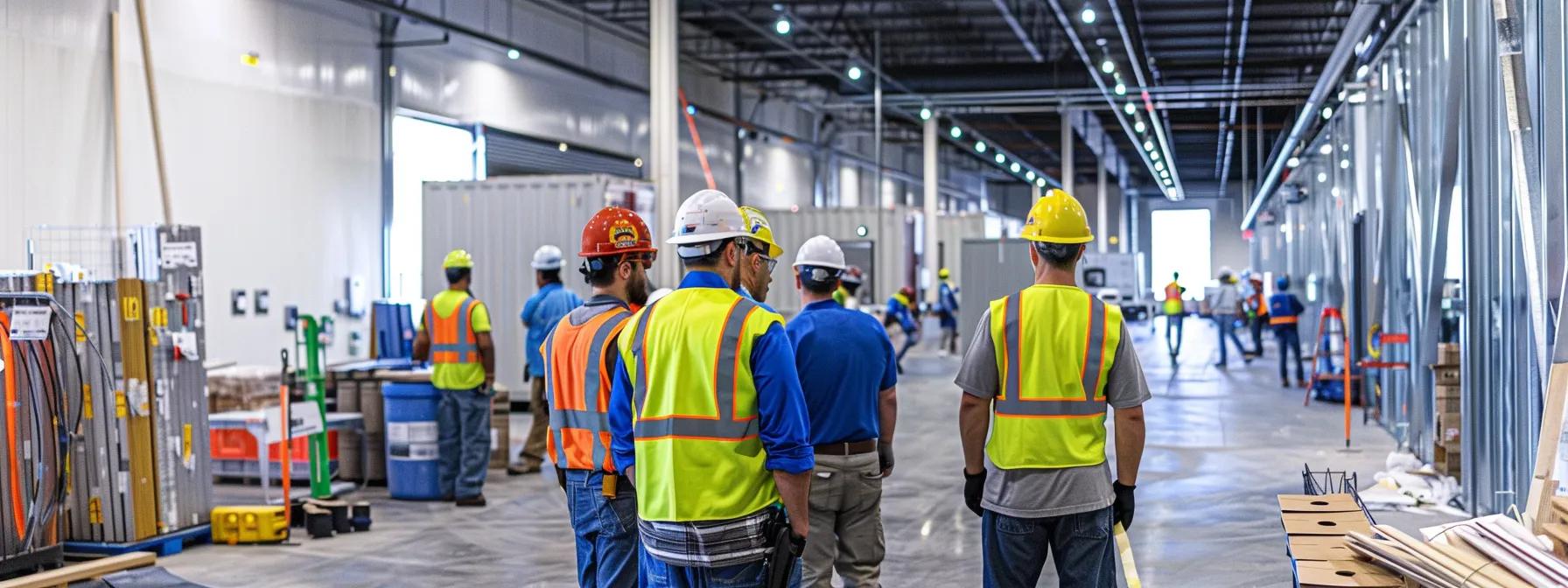
Coordinative measures and workforce training integrate by aligning installation procedures with site-specific safety policies and competency standards.
Before **design installation** of wire rope horizontal lifelines or scaffold rail systems as part of **fall protection equipment**, contractors conduct a hazard analysis and toolbox talk under American Society of Safety Professionals (ASSP) guidelines, ensuring each crew member understands anchor strength, connection angles, and equipment inspection criteria.
Hands-on training sessions including inspection checklists and emergency descent drills reinforce lifeline system use, first-aid readiness, and rescue planning, reducing accident rates by up to 45% according to a 2021 ASSP study of construction sites employing combined fall protection equipment and training programs.
How is sustained performance achieved through regular inspections and maintenance?
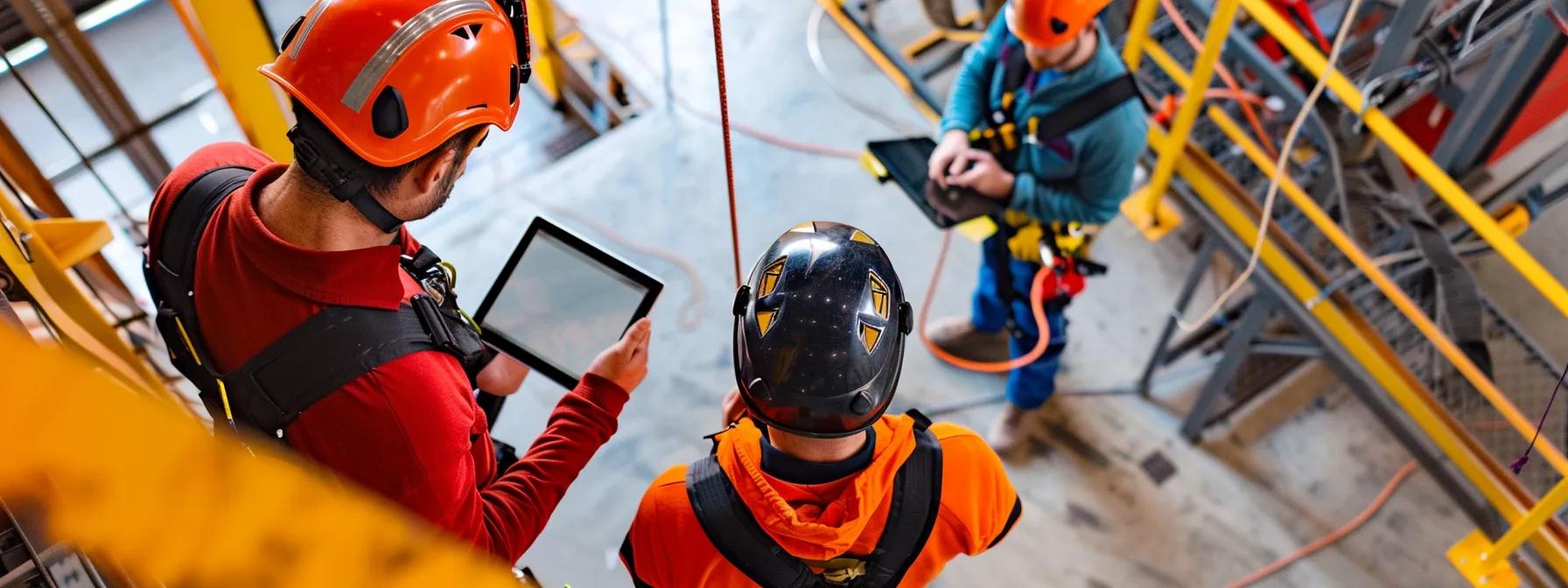
Sustained performance is achieved by conducting scheduled inspections, analytics-driven maintenance, and annual retesting of fall protection components using our fall protection equipment to detect wear, corrosion, or mechanical failure across the industries we serve.
Inspection teams document rope abrasion, hardware deformation, and expiry dates on energy-absorbing lanyards and fall protection equipment for the industries we serve following an ISO-compliant audit protocol, while deflection tests on safety nets confirm catch capacity above 4 kJ.
Maintaining detailed data logs of inspection results and downtime schedules ensures proactive replacement of harness webbing, anchor bolts, and guardrail segments—preventing up to 98% of system failures reported by manufacturing and telecommunication contractors during annual maintenance cycles. For more insights, visit our blog or get a free quote on our fall protection equipment.
What factors determine the choice of fall protection system?
Equipment selection depends on structure type, work height, access frequency, and hazard assessment.
How often must harnesses and lanyards be inspected?
Harnesses require a user check before each use and a formal inspection annually by a qualified professional.
Can fall protection systems be used in confined spaces?
Yes, portable davits and winch-based rescue systems adapt to confined entry and vertical retrieval needs.
What training is required for fall protection installation crews?
Crews complete ASSP-approved programs covering hazard recognition, equipment use, rescue plans, and inspection protocols.
How do regulatory standards differ between roofing and tower applications?
Roof edge protection follows OSHA 1910.29, while tower systems comply with ANSI Z359.15 for vertical lifeline devices.
Effective fall protection demands a holistic approach combining equipment, training, and maintenance. Regular inspections and data-driven analytics extend system lifespan and ensure regulatory compliance. Tailored solutions—from telecommunication towers to warehouse mezzanines—reduce accident rates and enhance worker confidence. Integrating ASSP and ANSI standards into every phase creates a sustainable safety program that keeps employees secure at all heights.

